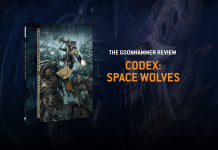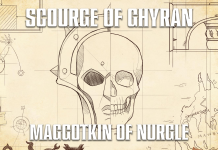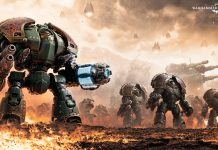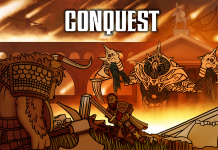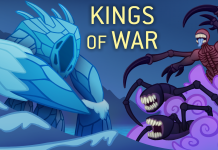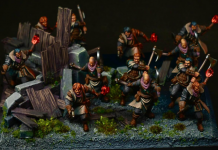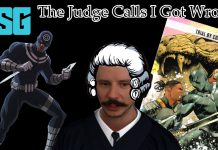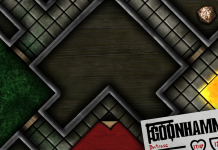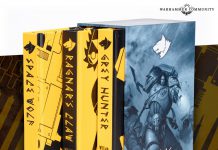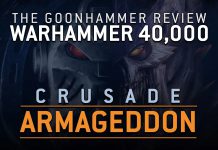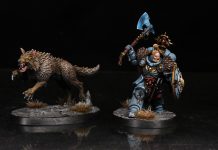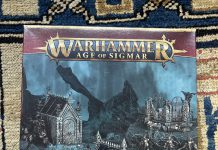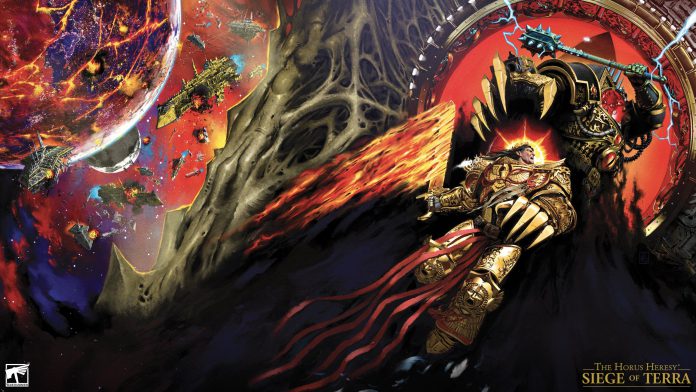Let’s not mess about. We know why we’re here. The End is nigh.
I’m going to try and do this without Spoilers. Spoilers are all over the place for this one, sadly, but as far as I possibly can, they won’t be here.
This is going to review the End and the Death Part 3 in the context of previous novels, but for a review of the End and the Death as a whole, give us a week or two to read them all again, please?
Part One Review here
Part Two Review here
A Worthy End?
I don’t know how Dan was really “supposed” to write up the very end, because of everything covered in the End and the Death, the final moments are the best known. William King’s White Dwarf short stories established – way back in 1993 – what’s long been thought of as the definitive end to the Heresy. The End and the Death takes a different tack, drawing together some of the story threads that have been running since Dan introduced the perpetuals and their journey in Legion and Know No Fear and, I think, comes up with a good end. There’s going to be a lot of pearl clutching about differences between the King and Abnett versions, but I don’t see why – 30 years is a long time, and there’s a substantial difference between a White Dwarf fluff piece and the end to a novel, let alone a series.
The changes that have been made to the classic story are, for the most part, well earned and well written. There’s bolters and warp madness and black rage, shoggoths for some reason, cameraderie and hated, along with your-mileage-may-vary satisfaction from stories ended and narrative arcs completed. Unlike End and the Death Part 2, I think this is a good book and I’d recommend it untrammeled by the “oh well you’re going to read it anyway” of Part 2.
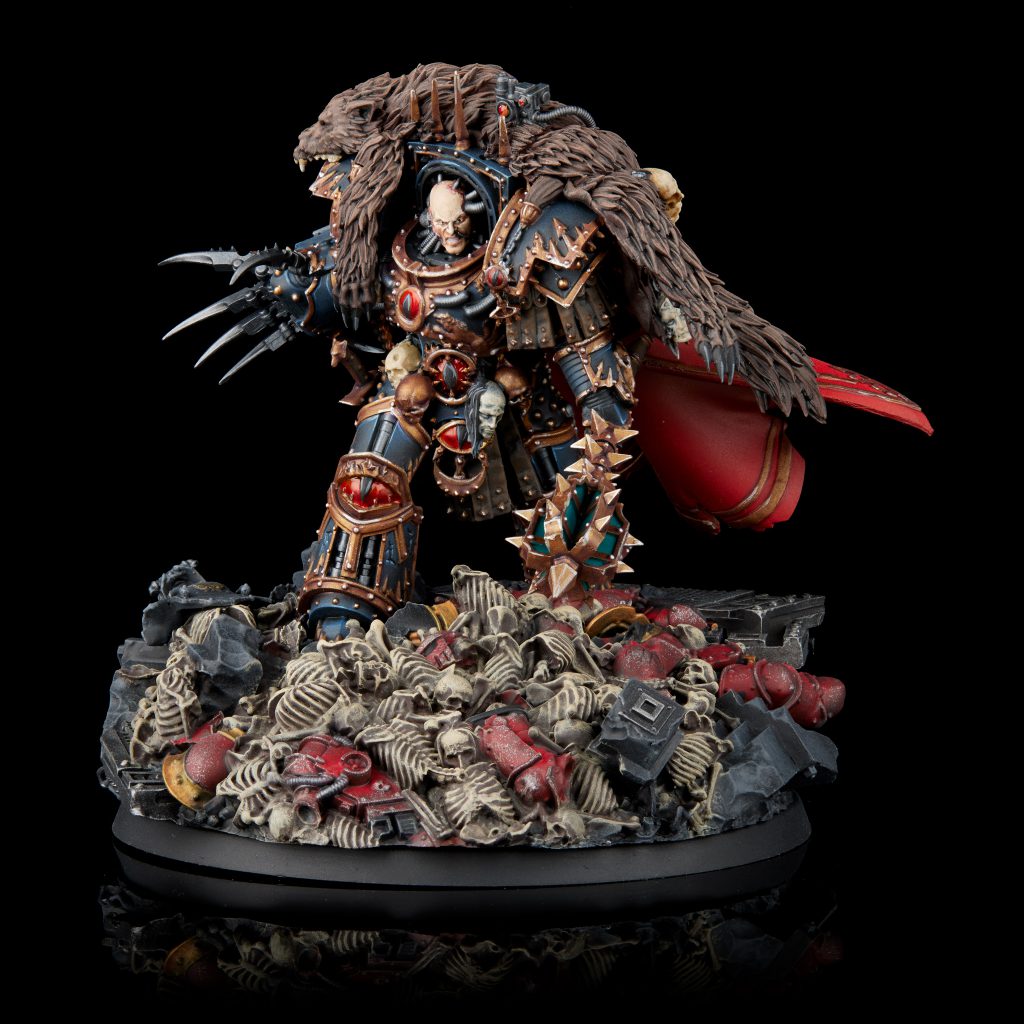
Marines, Blood Angels and More
There’s a lot here – the end of every one of Abnett’s threads and a hundred others from everyone else who’s contributed to the Heresy. Instead of going beat by beat, or really digging into the mechanics (go to a plot summary for the first – and Abnett’s afterward for the second), I want to mention a few bits that stood out as summaries for “is it a good book”?
The structural problems that beset Part 2 – the clever, but wearing, folding of space and time into a single point of horror – are for the most part resolved. It’s fun, even a relief, to see our characters in motion. Stuff is happening again, and most of the stuff that’s happening is great. With the end approaching fast, it’s a lighter read than Parts One and Two. It feels stripped of much of the gothic verbosity that either made Part One really interesting or Part Two interminable (dealer’s choice there), and some of the language and tone changes have been stripped back. What remains is a tighter, leaner, better book that feels closer to some of Dan’s best Gaunt’s Ghosts novels than it does to his more considered and detailed Inquisition work.
Characters are the heart of Abnett’s work, and they’re often shaken up, changed, thrown off-key delightfully. The bit was all knew would kick us off, Nasser Amit’s No Good Very Bad Horrible Day, is absolutely fantastic. The psychic nailbomb of Sanguinius’ death transforms the Blood Angels into the vampiric berserkers we know and love – so far so good – and Abnett’s typically descriptive, lovingly violent prose does them bloody justice. The dark, synesthesic horror of the Blood Angels pushes many of the remaining traitor viewpoints out of the book, and, mercifully, allows characters to run on in the background without constant check ins. With a stroke, a legion is taken off the board, but we still know what they’re doing, cutting down the perspective bloat of Part 1 and 2 while leaving a sinister, raging threat to every other character that drops in at unexpected and gorily satisfying moments.
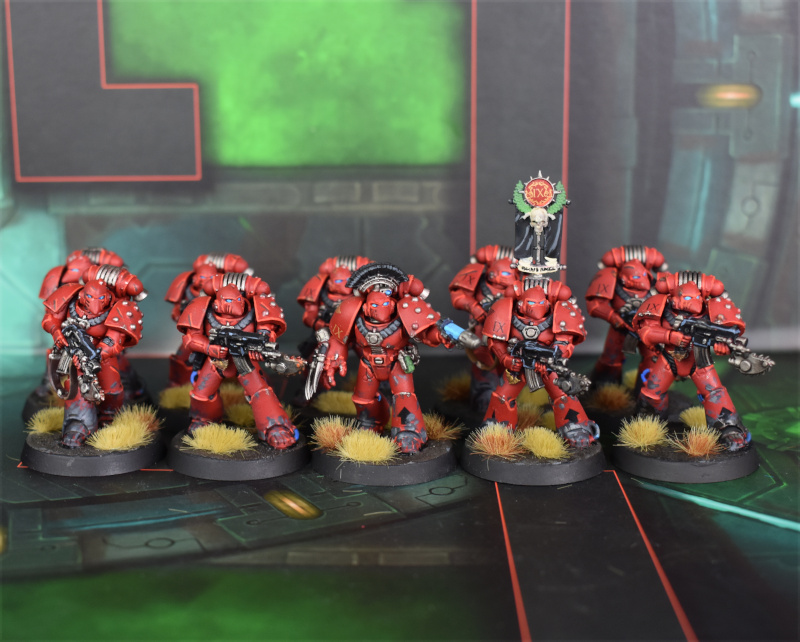
Meanwhile, new and continuing perspectives are brought to satisfying conclusions. Valdor continues his march towards other books and other histories, and after the return of the Lion and of the Avenging Son in 40k, we finally have a narrative to stand up to Abbadon (of whom much is made and the Despoiler references grow thin, in the end) here and that’s exciting. Valdor has grown over the course of the End and the Death, the one character arc that benefits from the sheer unrelenting length of the end of the saga. I’ve been taking pains to mention him in each review because I really like his characterisation – standoffish, wise, cold, but learning as he goes. One of the best new bits is Perturabo – and to a lesser extent Lorgar – meditating on the nature of chaos and themselves. Perty’s bit particularly makes you wish for more, good, material on him during the siege, and might even make you go pick up that resin model.
Other characters don’t fare so well – the Perpetuals, now finally reaching their true purpose, feel like a story that’s gone on too long, and their winding road ends almost as far away as it possibly could. While everything there ends up “as it should”, the very end, the final fragment of John’s story made me laugh – and possibly not for the best of reasons. Sigismund spends another book in the thrall of a story that doesn’t quite reach what Wraight completed in Warhawk, where Sigismund could have stayed. The Dark Angels get to the point of the Hollow Mountain, and what they find there is certainly interesting and plot relevant, but their travails as a legion still feel a little vestigial, whatever their actions accomplish on the Vengeful Spirit.
But you know what? It’s mainly bloody good fun. Throats are cut, or bit, evil villains scheme, good guys die horribly or wander the warp, lost and damned. It’s tight, much, much tighter than Part 2, for all that the same show-then-tell-and-tell-and-tell-and-tell happens again. For all that the “other stuff” is good, the problem with everything that isn’t the Emperor is that you’re stuck in the fireworks factory problem. There’s such sights to see on the way, but Milhouse was right to ask – when are they going to get to the fireworks factory? Why aren’t we on whatever the Vengeful Spirit has become? I felt like I was rushing through the introduction and periodic interruptions, because there’s one thing in this book. You just want to get to it.
The Big Fight
When you get to it though…It’s the big ticket item we wanted it to be, the Thrilla in Manilla, the Rumble in the Jungle, the Fear-it on the Vengeful Spir-it, the Emperor Vs Horus. What you’ve come to read about, right? Two words for you:
It’s great.
It really is. “Abnett Unleashed” might have been the tagline for all three parts of the book, and here he is really free to do everything he does best, for as long as he likes, and it really works. The Emperor’s battle is in the real, the warp, in memory, in fable and metaphor. The Emperor and Horus fight physically and psychically, but also artistically, architecturally, geographically, historically. It’s hyper kinetic violent action and horror, the kind of 40k action that Dan does so well, but it’s also slow, meditative, dripping in gothic trappings, or laden in mystic symbolism that I’m not sure I got, but googling around has shown me certainly exists, or reflections and aspects that feel deeply personal, and, all at the same time, proper mind-bending science fiction. The fight takes up almost all of the middle of the book and draws in multiple perspectives when it’s not (excitingly, I love the use of this throughout the End and the Death, but this is the best use of it) inside Horus’ head. Right here, at the end, we get some of the best exploration of Horus as the Emperor’s son, too, amidst all the talk of the Old Four, and so much of the fight – and how it ends – is played out in Horus’ internal monologue. It goes on forever, but not a moment too long – I think, amazingly, that there isn’t quite enough.
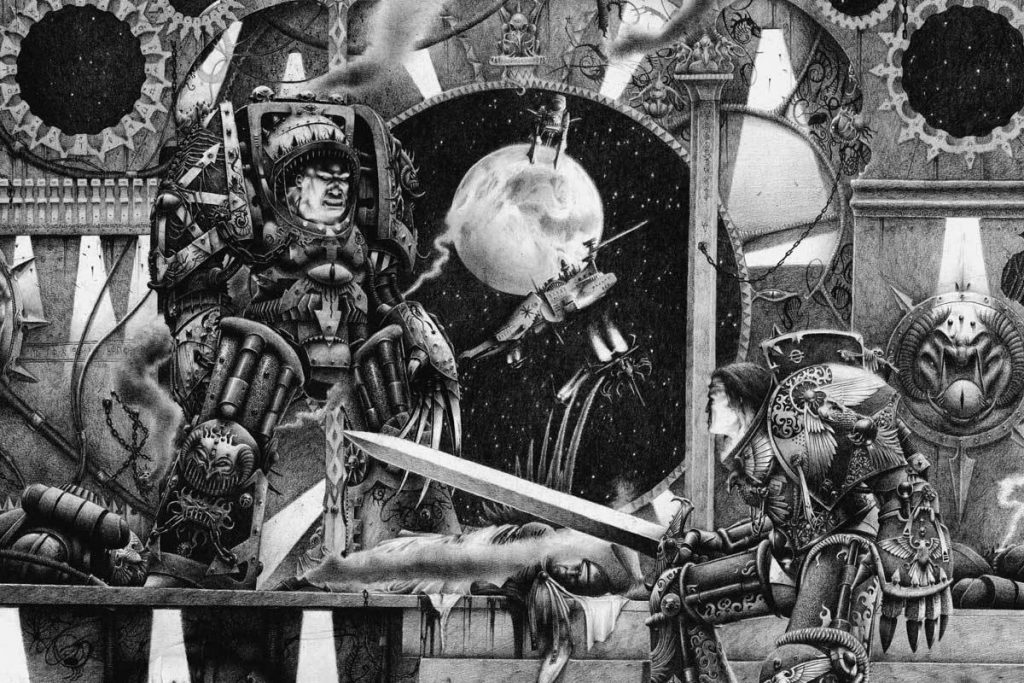
The cast of characters that have to get involved in one way or another are less exciting but have valid parts to play. The fight continues not just through their perspective, but through their actions and characters, which is a nice touch, and their composition is such that Abnett renders all preceding stories true in the telling. The view of the impossible through slightly-less-inhuman eyes they give helps to spin the fight out in strange directions, allowing the weirdness of the fight to grow weirder, a pirouetting world-in-itself of violence and madness that spins between skull-crushing brutality, meditation upon the nature of man, and cold, calculated play that turns inward to spiritual and metaphysical levels. Here is what 40k could be about when it’s not jacking itself off about boltgun shells. Here is what we should come to see more often in the Black Library – the use of the fantastic to make us think. Here, for these 100-odd pages of insanity, is some really great stuff.
Ok, so slight caveat here. One bit is not great, and you’d be howling in the comments if I didn’t say that. I’ll not activate that particular trap card – but I did appreciate the Draco references.
MAJOR SPOILERS IF YOU CLICK HERE, LEGIT
The End Of Itself
Whether or not we’ve reached a satisfying conclusion will depend on your relationship to the series as a whole, and to Part 2 of End and the Death in particular. Abnett has teased out a strand of power against choice throughout the End and the Death, and it comes to a narratively coherent end here. I don’t know, yet, if I liked it, but drawing on the cyclical, slightly hypnotic structures of the three parts of this epic to bring Horus vs Emperor to a close is not a misstep. While it might take a different route to the end from King, it works if we consider the End and the Death as a whole, and it works very well with Dan’s Heresy in mind. The line from Horus Rising, to Legion, to Prospero Burns, to Know No Fear, to Unremembered Empire, to Saturnine, to the End itself, supports Dan’s choices here. Because it has all been a choice. Ollianus made his back in the Bronze Age. Loken made his in 2006, and now reaps the rewards. The Emperor made theirs in Part 2. Horus, in the end, freely chooses.
With choices made, and battles had, the book ends, but not without enough dangling threads to promise either worlds of our imagination – there’s so much tabletop room to explore with the traitors still mired on Terra – or, less excitingly, in another series. There’s some very fun and very Abnett gothic flair and spooky warp shenanigans to round us off as well and I think I could legitimately hear him screaming “go read Pariah and Penitent already!”, but a lot of the remains are quick-fire roundups of what happens next that we either know or don’t really need – but, in a nice touch, all clearly foreshadowed. The end of the book is ¾ of the way through – what endures after is good, just a little reminiscent of the credits scene of Animal House.
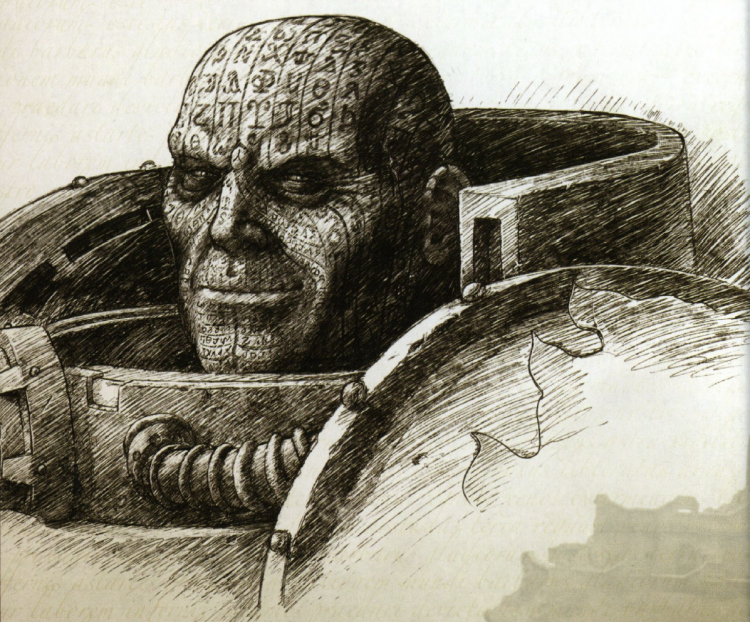
I don’t know what the editorial direction was here, but it feels very much from the editor’s pen that firmly wrapping everything up was verboten (fair enough), but providing unnecessary closure was very much on the table, so that other books can be written in the gaps remaining and the fans get to know what happened to their favourite characters. Caught between these poles is an awkward place to be and when the book ends I don’t think the balance is quite struck. From a drastic, crushing, exciting climax, the very final quarter is a little flat. We’ve ended. 40k has begun. Cool
The Siege books have all been blessed with afterwords, and their absence in part one and two (while necessary) was sadly felt. The comprehensive overview Dan gives here is fantastic, and does a much better job of pointing out structure, tone and language than I have over the last three review articles (thank god!). It’s the most interesting part of the book(s), to a weirdo like me. I felt like it was deliberately addressing some of the issues many reviewers have raised about the End and the Death, and that’s an interesting tack to take even if I don’t necessarily agree with some of it. The afterward speaks of pressures – obligations to self, company and fans. Of the difficulty of creating something so known and so beloved, that fits with everything that’s come before, has space for creation and still fits our own constructions of the final fight. The pressure to make everything important, and valid, and as perfectly detailed and pivotal as any other, to spare not a drop of narrative blood. That pressure is immense, and I’m not sure it’s survivable. Taken as a whole, the End and the Death is better than the sum of its parts, but those pressures drive fault lines into the book that leave all three parts an interesting, but flawed, experience.
Heretical Ramblings
And so what of the Heresy? Of the Siege? With the series over and my reviews done, I’m going to add a completely skippable afterword of my own.
I was nineteen when Horus Rising came out. I’m 36 now. In that time has come a tide of books, innumerable short stories, a massive expansion of Games Workshop’s audience and a depth of “historical” exploration of the setting that noone could have predicted back in 2006. The Black Library has become a core strand of the business, authors and stories proliferating at a ferocious rate. There are fans now who engage with 30/40k only through the books and fair play to them, others whose hobby has become book collecting, fighting over the limited editions with much wailing and gnashing of teeth. Whole semi-parasitical industries have sprung up to prey on those wallets – the loretubers and lore “crusaders”, the scalpers and hoarders and resellers. None of that possible without the Heresy, the backbone of the lore output for the best part of two decades. The world of Games Workshop has changed, not just during the Heresy series, but because of it.
If we cast our minds back to when this all began, Games Workshop were scrabbling for something – anything – to return the company to the profitability it had enjoyed during the Lord of the Rings bubble. The Black Library was a small, niche element of that. But in 2006 the BL’s profit grew by a fifth, and then, year on year, it grew ever larger. 12 books in, with A Thousand Sons, the Heresy cracked the New York Times bestseller list and would, just about – pretty much regardless of the quality of the book – remain there with each Heresy release. With the Heresy not just selling but selling in quantities unrivalled by other tie-in fiction at the time, Forge World steamed ahead with the first of the Black Books, Betrayal, in 2012. You could make money from the Heresy. Hell, you could sell all those Badab War Marines that only the grognards bought as Heresy guys. You could sell people Thunderhawks by the hundred, because you were telling a story that people would buy, a ready-made narrative where you’d previously told them to write it themselves, feeding us reasons to buy resin and plastic book by book.
The Heresy – not the background concept, but the Heresy as written by Abnett, McNeil, Dembski-Bowden, Thorpe et al – by building on the lessons learned by the Lord of the Rings bubble began to define Games Workshop. The idea that you could sell things based as much on the story as models went from tentative to a core pillar of GW’s modern approach. 40k moved forward into indomitably new pastures. The Old World died over the course of several books. Age of Sigmar launched crusades and ages. Those worlds have moved on, moved forward – new stories, new perspectives, new authors, new massive (and expensive) character models, and they’re doing bloody well.
The Heresy has been great for the company, but has it been good for us, as hobbyists? I don’t know. The Heresy series has seen the 40k universe taking itself as a straight-down-the-line serious Grecian tragedy, a company and a community thriving on the idea that the story is grown-up “proper” scifi for adults who love men going their own way, violence, no fucking, and an average of one female character a book*, rather than the grab-bag of serious, semi-farcical, and satirical elements it had been all the way before. A series largely shorn of satire – almost without fun at all – has changed how we think about the hobby, brought in new people who occasionally don’t seem to get that the whole thing remains a cosmic, tragic, joke. Without the absurdity, nearly without the humour, with all the seriousness of a chainaxe to the groin, we have a 70+ book series about men, doing war things, which talks almost exclusively of the relationships between fathers and sons, brothers and brothers, and the primacy of “traditional” western male values, of militarism as the answer to militarism, of war unending, steeped in empty heroism. Is that good for men? Is it good for our world?
It has unleashed and emboldened dark forces inside and outside the narrative. The foundational myth of 40k is no longer a couple of lines to be interpreted as the reader wished, a vague watercolour of betrayal and chaos, but a million lines of manly man detail that leads many – too many – to treat the previously malleable back story as god’s own diktat because they see themselves as heroes, outside of satire, unmockable. Adherence to this inviolable, masculinist lore has become a battleground, fertile lands for bigots, fascists or just the plan tedious to loyalty-test other hobbyists and attempt to drive out diverse voices, a division between those who merely know, and those of us who understand. While we have gained much knowledge about the Primarchs and the Legions, the noble Custodes and the scoundrel Erebus, gained whole armies and model ranges given backgrounds (and good ones), perhaps we have lost something too. Much has changed, but is it better, is it worse? The Machine Eats itself, and now that it is finished, what does it consume?
*don’t @ me, I haven’t verified this and won’t
And where do we go now? There will be other series. There’s certainly set-up for the Scouring in this one, and there’s certainly plenty of space there to explore how 30-becomes-40k. But the Heresy is – perhaps – done, and nothing will be the same in the wake of its passing. From here, stories become screenplays for Amazon, an IP reaching out beyond the book and the model into the infinite-moneyscape of one of our own pound shop Erebuses. Will we see this epic series repeated, contingent on sticking with Prime? With the Heresy out of the way, what will be offered up for our voracious lore consumption, and what could measure up to it? If nothing else has the resonance of the Heresy as yet, I am sure it can be created – 20 years ago did any of us care about Loken, Sindermann or Valdor?
Enough. You probably aren’t here to read me attempting to wax as lyrical as Abnett does, because I’m not even a billionth part as good. We’re here, and we’re done. Someone asked me recently, was the End and the Death good? Was the Heresy good as a whole? Was it all worth it? Is life all worth it (ok, they didn’t ask that one)? I think the answer is the same.
It was ok. There were good bits. I enjoyed the ride.
Questions, comments, suggestions? contact@goonhammer.com, or leave a comment below.

